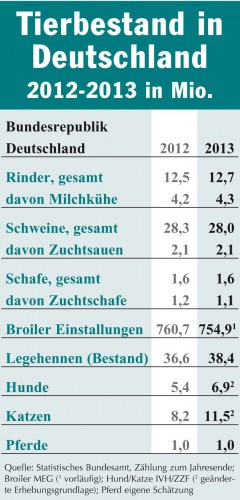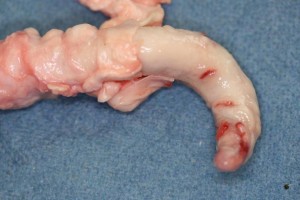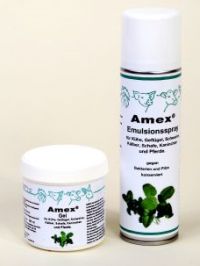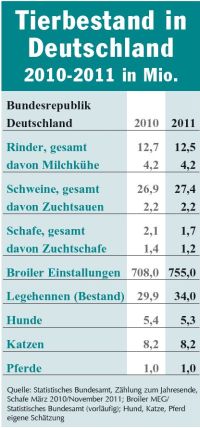|
Fundort
|
Keim(e)
|
Quelle
|
|
Mobiltelefone
|
MRSA
|
Morris TC. et al., Doctors taking a pulse using their mobile phone can spread MRSA, BMJ 2012;344:e412
Walia SS. et al., Cellular telephone as reservoir of bacterial
contamination: myth or fact. J Clin Diagn Res. 2014 Jan;8(1):50-3.
Osborne JD. et al.; Might wipe clean covers for mobile phones reduce risk of spread of pathogens?, BMJ. 2012 Feb 7;344:e871
|
|
TV-Fernbedienungen
|
MRSA
|
Stephanie A. Fritz et al.,Contamination of Environmental Surfaces With Staphylococcus aureus in Households With Children Infected With Methicillin-Resistant S aureus, JAMA Pediatr. 2014;168(11):1030-1038.
|
|
Hunde, Katzen, Pferde
|
MRSA
|
Ewan M Harrison et al., A shared population of epidemic methicillin-resistant Staphylococcus aureus 15 circulates in humans and companion animals, mBio vol. 5 no. 3 e00985-13
|
|
Wale
|
MRSA
|
Hower S. et al., Clonally related methicillin-resistant Staphylococcus aureus isolated from short-finned pilot whales (Globicephala macrorhynchus), human volunteers, and a bayfront cetacean rehabilitation facility., Microb Ecol. 2013 May;65(4):1024-38.
|
|
Toilettensitze
|
MRSA
|
Giannini MA. et al., Are toilet seats a vector for transmission of methicillin-resistant Staphylococcus aureus? Am J Infect Control. 2009 Aug;37(6):505-6.
|
|
Badestrände
|
MRSA
|
Plano LR. et al., Human-associated methicillin-resistant Staphylococcus aureus from a subtropical recreational marine beach. Microb Ecol. 2013 May;65(4):1039-51.
|
|
Öffentliche Verkehrsmittel
|
MRSA
|
Yeh PJ. et al., A diversity of Antibiotic-resistant Staphylococcus spp. in a Public Transportation System. Osong Public Health Res Perspect. 2011 Dec;2(3):202-9.
|
|
Geklärte Klinik- und Siedlungsabwässer; Flüsse, Seen, Sedimente
|
ESBL, MRSA
|
Amos, G. C. A. et al., Waste water effluent contributes to the dissemination of CTX-M-15 in the natural environment, J Antimicrob Chemother. Jul 2014; 69(7): 1785–1791.
Czekalski, N. et al., Increased levels of multiresistant bacteria and resistance genes after wastewater treatment and their dissemination into Lake Geneva, Switzerland, Front. Microbiol., 22 March 2012, online
Birošová L, et al., Pilot study of seasonal occurrence and distribution of antibiotics and drug resistant bacteria in wastewater treatment plants in Slovakia. Sci Total Environ. 2014 May 24;490C:440-444.
Bréchet C. et al., Wastewater treatment plants release
large amounts of extended-spectrum β-lactamase-producing Escherichia coli into the environment. Clin Infect Dis 2014 Jun;58(12):1658-65.
|
|
Vegetarier
|
Mehr resistente Keime
|
Guinee, P. et al., E. coli with resistence factors in vegetarians, babies, and non-vegetarians; Appl Microbiol 1970, 20, S. 531 – 535
Elder, HA. et al., Human studies to measure the effekt of antibiotic
residues; Vet Human Toxicol, 1993 35, Suppl 1 S. 31 – 36
Sannes, MR et l. Predictors of Antimicrobial-Resistant Escherichia coli in the Feces of Vegetarians and Newly Hospitalized Adults in Minnesota and Wisconsin, The Journal of Infectious Diseases 2008; 197 S. 430–4
|
|
Kräuter
|
ESBL
|
Veldman K, et al., Enterobacteriaceae resistant to third-generation cephalosporins and quinolones in fresh culinary herbs imported from Southeast Asia. Int J Food Microbiol. 2014 Feb 25;177C:72-77.
|
|
Gemüse, Sprossen insb. aus Bioläden
|
ESBL
|
Reuland EA. et al., Prevalence of ESBL-producing Enterobacteriaceae in raw vegetables. Eur J Clin Microbiol Infect Dis. 2014 May 22. [Epub ahead of print]
|
|
Hähnchen-, Hirsch-, Reh-, Hasen-, Puten-, Bio-Hackfleisch
|
ESBL
|
Hamburger Senat. Antwort des Hamburger Senats auf eine schriftliche Kleine Anfrage der Abgeordneten Heidrun Schmitt (GRÜNE) vom 21.05.2014 – Drucksache 20/11902 Betr.: Antibiotikaresistente Keime in Fleisch- und Fleischprodukten; 27. Mai 2014.
|
|
Ratten
|
ESBL
|
Guenther S. et al., Is fecal carriage of extended-spectrum β-Llactamase-producing Escherichia coli in urban rats a risk for public health? Antimicrob. Agents Chemother. May 2013 vol. 57 no. 5 2424–2425.
|
|
Wildtiere
|
ESBL
|
Costa D. et al., Detection of Escherichia coli harbouring extended-spectrum beta-lactamases of the CTX-M, TEM and SHV classes in faecal samples of wild animals in Portugal. J Antimicrob Chemother. 2006;58:1311–12.
|
|
Möwen
|
ESBL
|
Bonnedahl J. et al., Dissemination of Escherichia coli with CTX-M type ESBL between humans and yellow-legged gulls in the south of France. PLoS One. 2009;4:e5958.
|
|
Patienten aus dem Ausland
|
ESBL
|
Robert Koch Institut. Zum Auftreten multiresistenter Erreger bei in EU-Ländern behandelten libyschen Patienten. Epidemiologisches Bulletin, 17. Oktober 2011 / Nr. 41, 379.
|
|
Heimkehrende Soldaten
|
ESBL
|
Janvier F. et al., Faecal carriage of extended-spectrum β-lactamase-producing enterobacteria among soldiers at admission in a French military hospital after aeromedical evacuation from overseas. Eur J Clin Microbiol Infect Dis. 2014 May 8. [Epub ahead of print]
|
|
Vögel
|
ESBL
|
Costa D. et al., Detection of Escherichia coli harbouring
extended-spectrum beta-lactamases of the CTX-M, TEM and SHV classes in faecal samples of wild animals in Portugal. J Antimicrob Chemother. 2006;58:1311–12.
Bonnedahl J. et al., Dissemination of Escherichia coli with CTX-M type ESBL between humans and yellow-legged gulls in the south of France. PLoS One. 2009;4:e5958.
Bonnedahl J. et al., Characterization, and comparison, of human clinical and black-headed gull (Larus ridibundus) extended-spectrum beta-lactamase-producing bacterial isolates from Kalmar, on the southeast coast of Sweden. J Antimicrob Chemother. 2010;65:1939–44.
Literak I. et al., Highly variable patterns of antimicrobial resistance in commensal Escherichia coli isolates from pigs, sympatric rodents, and flies. Microb Drug Resist. 2009;15: 229–37.
Simoes RR. et al., Seagulls and beaches as reservoirs for multidrug-resistant Escherichia coli. Emerg Infect Dis.2010;16:110–12.
Wallensten A. et al. Extended-spectrum beta-lactamases detected in Escherichia coli from gulls in Stockholm, Sweden. Infect Ecol Epidemiol. 2011;1:7030.
Hernandez J. et al., Characterization and comparison of extended-spectrum beta-lactamase (ESBL) resistance genotypes and population structure of Escherichia coli isolated from Franklin’s gulls (Leucophaeus pipixcan) and humans in Chile. PLoS One. 2013;8:e76150.
|
|
Freilandschweine
|
MRSA
|
Porrero MC. et al., Detection of methicillin-resistant Staphylococcus aureus in Iberian pigs. Lett Appl Microbiol. 2012 Jan 17. [Epub ahead of print]
|
|
Öko-Schweine, Bio-Landwirte, Hofhunde
|
MRSA
|
Blaha, Thomas und Sundrum, Albert, Epidemiologische Studie zur Entwicklung von MRSA (Methicillin-resistente Staphylococcus aureus) in ökologisch wirtschaftenden Schweinebetrieben. Abschlussbericht, 2011
|
|
usw…………
|
|
|
 (aho) – Kaum ein Tage vergeht, an dem nicht selbsternannte „Angsttrompeter“ mit Meldungen über antibiotikaresistente Keime auf Fleisch versuchen, Zeitungsauflagen zu steigern oder ihre gesellschaftspolitischen Ziele durchzusetzen.
(aho) – Kaum ein Tage vergeht, an dem nicht selbsternannte „Angsttrompeter“ mit Meldungen über antibiotikaresistente Keime auf Fleisch versuchen, Zeitungsauflagen zu steigern oder ihre gesellschaftspolitischen Ziele durchzusetzen. ®
®








 Topic®-Emulsionspray und Gel decken ab, lösen Verkrustungen, trocknen aus und sind gegen Bakterien und Pilze konserviert. Die Topic®-Produkte neutralisieren den tierspezifischen Eigengeruch und Gerüche von Entzündungssekreten z.B. beim Zwischenschenkelekzem, Sommerekzem, Kannibalismus, Mauke, Huf- oder Klauenveränderungen. Der versorgte Bereich wird so für Insekten (Fliegen) wenig attraktiv. Die Emulsion und das Gel können auch unter Verbänden und im Zwischenschenkelbereich von Kühen eingesetzt werden.
Topic®-Emulsionspray und Gel decken ab, lösen Verkrustungen, trocknen aus und sind gegen Bakterien und Pilze konserviert. Die Topic®-Produkte neutralisieren den tierspezifischen Eigengeruch und Gerüche von Entzündungssekreten z.B. beim Zwischenschenkelekzem, Sommerekzem, Kannibalismus, Mauke, Huf- oder Klauenveränderungen. Der versorgte Bereich wird so für Insekten (Fliegen) wenig attraktiv. Die Emulsion und das Gel können auch unter Verbänden und im Zwischenschenkelbereich von Kühen eingesetzt werden.





Reply to “Resistente Keime: Mobiltelefone, TV-Fernbedienungen und Wale immer gut durchbraten”